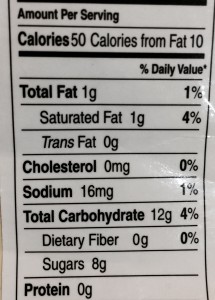 Taking a long-term view of health can save money and heartache—literally, when considering your cholesterol.
Taking a long-term view of health can save money and heartache—literally, when considering your cholesterol.
What is Cholesterol?
Cholesterol is a soft, waxy substance that naturally occurs in your body. It helps develop cells and hormones, and aids in digestion and the absorption of certain vitamins.
The amount of cholesterol you have is affected by what you eat—animal meats and byproducts such as dairy and oils contain cholesterol, where as plants and plant byproducts do not. Exercise and family genetics also impact your personal cholesterol levels. Too much cholesterol is the main risk factor for heart disease and stroke, diseases that claim about 380,000 American lives each year.
Good and Bad Cholesterol
Cholesterol is carried through the bloodstream by a combination of fats (lipids) and proteins. It has two main components: low-density lipoproteins (LDL) and high-density lipoproteins (HDL). LDL is the “bad” cholesterol that can contribute to heart disease; HDL is the “good” cholesterol that helps remove LDL from the blood (think ‘H’ for ‘Happy’ cholesterol). These, along with triglycerides (fat stored in the body), make up your cholesterol count.
How Cholesterol Is Measured
Cholesterol levels are determined through a blood test and is measured in milligrams per deciliter of blood (mg/dl). Total cholesterol is the sum of LDL and HDL plus one-fifth of your triglycerides number.
A desirable total cholesterol level is < 200 mg/dl, according to the National Institutes of Health: the lower the LDL and the higher the HDL, the better. An LDL level of 130 mg/dl or less and 60 mg/dl of HDL are considered optimal for protection against heart disease. The U.S. Centers for Disease Control and Prevention (CDC) estimates that 12.9% of American adults have high cholesterol—about 1 in every 8 people over the age of 20.
The Dangers of High Cholesterol
If your body has more cholesterol than it needs, excess binds to the interior walls of the blood vessels leading to and from the heart, called arteries. The fats build up over time, hardening into plaque and narrowing the arteries so that it’s difficult for oxygen-rich blood to flow from the heart to the rest of the body. This condition, “atherosclerosis” (also called “arteriosclerosis” or commonly “hardening of the arteries”), is the main cause of heart attacks and strokes.
The American Heart Association (AHA) offers an interactive visual of coronary artery disease.
Lowering cholesterol
The great news is that high cholesterol is usually completely preventable or reversible. The Mayo Clinic recommends 5 lifestyle changes to reduce cholesterol:
- Lose weight
- Eat heart-healthy foods
- Exercise
- Quit smoking
- Drink alcohol only in moderation
It’s worth noting that new 2015 dietary guidelines from the government agency that brought you the Food Pyramid reverse the decades-long belief that foods with cholesterol automatically increase cholesterol. The focus now is on avoiding saturated fats—animal fats such as fatty meats, poultry, cheese, butter—and trans fats—found in fried foods and packaged bakery goods. So feel free to eat lean, former no-nos such as egg yolks and shellfish!
What if I Can’t Lower My Cholesterol?
Some people aren’t able to make lifestyle changes to lower their cholesterol. There also is a genetic component that causes high cholesterol in some families. For people at risk for coronary artery disease, doctors prescribe cholesterol-lowering drugs known as statins. Twenty-two percent of Americans 45 years and older take a statin drug, according to the CDC.
The Cost of Statin Drugs
Statin drugs vary widely in cost at retail prices. Co-pays also vary, depending on which insurance you have. Cost is important; taking statin drugs must continue for years or even a lifetime. Consumer Reports provides a chart of common statins and their costs, Consumer Reports Best Buy DrugsTM.
Statin drugs must be prescribed by a doctor, who will also take into consideration a patient’s overall health and monitor effects of the medication. If you already take cholesterol medication and pay retail, see how to lower the cost of prescriptions.
What Are My Next Steps?
Adults in their 20s and 30s don’t meet the medical criteria for taking cholesterol-lowering drugs. However, a new study published in the AHA journal shows that high cholesterol as early as your 30s increases the risk for heart disease—and the longer it stays elevated, the greater the risk.
There are no symptoms of high cholesterol. Recommendations from AHA are for everyone over age 20 to get a cholesterol test and repeat the test every four to six years—and take steps to lower cholesterol if yours is high.
If you’re over 40, consider getting cholesterol levels tested at your next physical exam and every year or two after. Tell your doctor if there is a history of heart disease or stroke in your family—testing for a genetic component to high cholesterol is a simple blood test. If your total cholesterol stays high and/or you have health conditions that put you at risk for coronary artery disease, your doctor might prescribe statin drugs.
Remember that your first line of defense against high cholesterol is to modify your lifestyle. Don’t underestimate the positive effects of diet and exercise on your health and your wallet. Ultimately disease prevention is the best money-saver of all!
